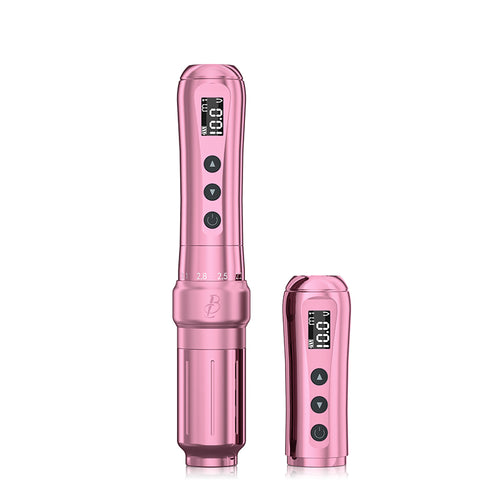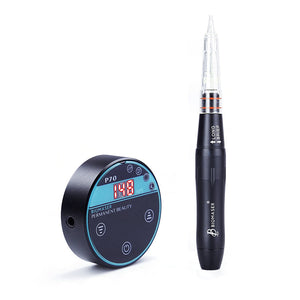What Do Prison Tattoos Really Mean? A Guide to Their Hidden Meanings

How Did Prison Tattoos Evolve Over Time?
Tattoos have been part of inmate culture since at least the early 20th century, but their roots go back even further. Historians believe that sailors started the tattoo tradition to mark their journeys at sea, using images like anchors and ships to express themselves and show their identities.
As attitudes towards tattoos changed over time, they began to appear in prisons. For inmates, getting tattooed became a way to assert their individuality in a place where personal identity is often lost. Tattooing allowed them to reclaim some sense of autonomy and dignity. Inmates used improvised tools—like sharpened objects for needles and homemade ink from ashes—to create their tattoos, showcasing their creativity and resourcefulness. Each tattoo can tell a story of hardship, loyalty, or regret, serving as a visual diary that reflects significant life events and relationships.
Interestingly, while tattoos were once heavily stigmatized, they are now more widely accepted in mainstream society. Celebrities and influencers proudly display their ink, which has contributed to a shift in perception—from viewing tattoos as negative markers to recognizing them as forms of artistic expression.
Now, let's take a look at some of the most common symbols you'll find in prison tattoos and what they really mean.
3mm stroke Tattoo Machine Double head Tattoo permanent makeup CTGE004
Teardrops
One of the most recognizable prison tattoos is the teardrop, often inked near the eye. This tattoo has several meanings that can vary based on personal experiences and prison culture.
Filled Teardrop
- Represents a murder committed
- Can indicate a death has been avenged
- May symbolize time served in prison
- Sometimes indicates loss of a loved one
Unfilled Teardrop (Outline)
- Typically represents attempted murder
- Can indicate seeking vengeance for a murdered friend
- May symbolize an incomplete act of revenge
- Sometimes represents solidarity with imprisoned loved ones
Interestingly, in recent years, teardrop tattoos have been adopted by some people outside of prison, but many veteran inmates tend to look down on those who wear them without having "earned" the symbolism. The placement of the teardrop can also affect its meaning: a teardrop under the left eye may indicate that the person has killed someone in jail, while one under the right eye could represent the loss of a family member or gang member.
Biomaser U1 Wireless PMU Tattoo Machine Eyebrows & Lips
Stars
Stars are a popular symbol in prison tattoos, often inked on the face, knees, or chest. Their meaning can change based on where they're placed.
Knee Stars
Stars tattooed on the knees signify a prisoner who commands respect and symbolizes the phrase "I will never kneel before anyone." This placement shows defiance against authority, making it a strong statement of independence and strength.
Chest Stars
- Chest stars are for the highest-ranking prisoners and must be earned through specific actions in prison.
- If someone has a star on their chest, it shows they hold an elite status and have gained significant respect among other inmates.
- In Russian prisons, stars also indicate rank. For instance, stars on a prisoner's shoulders or neck suggest a higher status, while visible tattoos on the arms can point to someone in a leadership role. On the other hand, stars on the lower body have different meanings related to status.
Stars in prison tattoos are serious status symbols that must be earned; they aren't just for decoration. Wearing unearned stars can result in severe punishment because they need to accurately represent a person's true status and rank within the prison community. Misusing or displaying these symbols incorrectly can lead to violent consequences among inmates.
Crosses
Cross tattoos are common in prison culture. Overall, the meaning of cross tattoos can differ greatly between prison cultures, with Russian tattoos having more specific criminal connotations compared to those in the West.
In Russian prisons, a cross tattooed on the chest signifies defiance against punishment. It shows that the wearer is fearless in facing both authority and God, and it often represents high rank within criminal organizations. This type of cross can also symbolize aggression and strength.
In Western prisons, crosses usually reflect religious devotion. They can indicate the time served, with the number of crosses representing the years spent incarcerated. Crosses may also symbolize protection or spiritual guidance, and sometimes they mark gang affiliations.
Biomaser P70 Mini Portable Permanent Makeup Eyebrow Tattoo Microblading Machine
Knives and Guns
Tattoos of knives and guns are powerful symbols in prison culture, reflecting the violent realities inmates face.
Knife Tattoos
When a knife tattoo is placed on the neck, it often signifies that the wearer has killed someone, showing their willingness to commit murder. It can also indicate that they are available as a hired assassin and demonstrate fearlessness toward violence.
Gun Tattoos
Gun tattoos usually represent involvement in violent crimes and readiness to use deadly force. They can mark a person's experience with weapons and may indicate gang affiliation.
These weapon-based tattoos are serious markers of status within the prison community and should not be worn lightly. Claiming false meanings can lead to severe consequences among inmates.
Biomaser TP006 Wireless PMU Machine - Dual Battery, Swiss Motor, Silent & Lightweight for Eyebrows & Lips
Number Tattoos
Numbers are often used in prison tattoos to convey specific meanings related to gangs or significant events.
Gang-Related Numbers
For instance, the number 1488 is significant among white supremacist groups, where "14" refers to the slogan about white supremacy and "88" stands for "HH," which means "Heil Hitler." Another important number is 13, which represents the letter "M" (the 13th letter) and is often linked to the Mexican Mafia. When combined with "MS," it indicates an affiliation with the Mara Salvatrucha gang.
Area Code Numbers
Tattoos representing area codes also hold meaning. For example, 713 signifies the Houston area code and is often associated with Mexican Mafia symbols, while 276 stands for the letters BGF (2nd, 7th, and 6th letters), representing the Black Guerrilla Family.
Dot Patterns
Some inmates use dot patterns as tattoos; for example, three dots can symbolize "mi vida loca" (my crazy life) and may represent prison, a hospital, and a cemetery. A pattern of five dots can indicate prison walls, with the center dot representing the prisoners themselves.
Clock Without Hands
The Clock Without Hands is probably one of the most symbolic tattoos in prison, symbolizing the very idea of "doing time" and long-term imprisonment. It is commonly found on the bodies of those serving extended or life sentences.
Worn on the wrist, like a watch that never comes off, it has a deeper meaning: it is a symbol of the sentence being endless. The lack of hands on the clock face represents the prisoner's disconnection from normal time-keeping, suggesting that time has stopped or lost meaning within prison walls.
Other prisoners add more symbols or other elements to the tattoos in order to tell their stories of conviction and sentencing. The design may be a traditional clock face, a watch, or even an hourglass, but the essential meaning of endless time remains the same for all versions.
Spider Web
Probably the most easily recognizable of all prison tattoos, the Spider Web often appears on the elbow and usually reflects the length the time inside or severity of the crimes committed.
Time Served
In the past, each ring of the web stood for a year behins bars. Inmates often add more rings to the design as their sentence progresses. This makes it a visual record of their time there.
Feeling Trapped
This tattoo is a metaphor for how people feel stuck in the jail system, like a spider's web that traps its prey. The location of the elbow is especially meaningful because it shows how long people spend sitting with their elbows on tables or jail bars while they're not doing anything.
Variations in Meaning
In some cultures, the web can denote that the wearer is a murderer, and each ring may represent a different victim. However, this can vary depending on the region and the nature of the prison system as well. The web might mean drug addiction; it shows being caught in the "web" of substance abuse.
FAQs About Prison Tattoos:
1. Why do some prisoners get the acronym ACAB tattooed on their bodies?
The acronym "ACAB" stands for "All Cops Are Bastards." This is a standard symbol in prison culture, showing rebellion against the police. It is more often viewed as numbers "1312," which correspond to the letter positions in the alphabet.
2. What does the tattoo 7 spades 2 diamonds mean?
The combination of the 7 of spades and the 2 of diamonds represents "72," a code in prison for identifying someone as a snitch or informant. This tattoo serves as a warning mark within the prison community.
3. What does a 1% tattoo mean?
The "1%" tattoo means that the wearer is an outlaw biker and comes from "one-percenter" motorcycle clubs. This term came into existence because the American Motorcyclist Association estimated that 99 percent of motorcyclists were law-abiding citizens.
4. What does 444 tattoo mean?
The number "444" is often associated with protection and spiritual guidance. Some believe it symbolizes angelic protection, while others see it as a sign of strength and resilience.
5. What does the black spade mean?
A black spade tattoo usually symbolizes power and good luck in prison culture. However, when combined with other symbols—especially if placed on the neck or behind the ear—it can also be linked to white supremacy groups.
[[related_products_6]]
Understand Prison Tattoos Beyond Crime
Not every tattoo tells a story of violence or crime; sometimes, they are simply artistic expressions or tributes to loved ones. From symbols of survival and loyalty to personal stories of love and loss, these tattoos represent more than just ink on skin. It's important not to judge individuals solely based on their tattoos. Many inmates wear tattoos as part of their identity, not as markers of criminality.








































